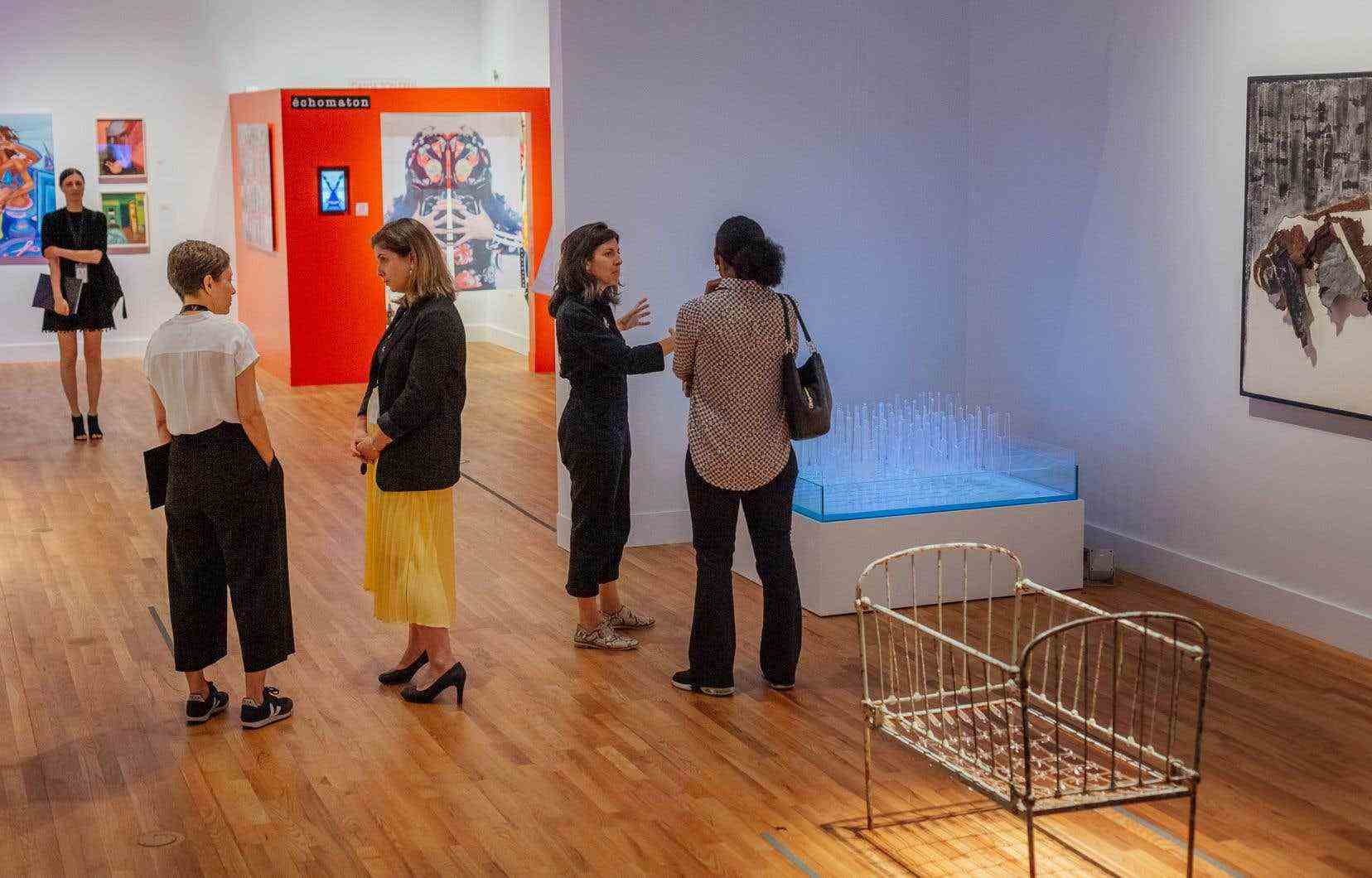The province’s museums have seen an average drop in admissions of 55% in 2021 compared to pre-pandemic normal, according to a survey by the Institut de la statistique du Québec (INSPQ).
The report released Wednesday by the INSPQ’s Observatory of Culture and Communications reveals that 6.8 million visitors attended a museum institution in Quebec in 2021, an increase of 72% compared to the 3.9 million admissions from the previous year.
Despite this increase, museums remained far from the average from 2015 to 2019, which amounted to some 15.2 million admissions per year.
While science museums and historical interpretation sites recorded the highest number of intramural admissions in 2021 (2.2 million and 1.5 million), art museums saw the average drop in attendance the largest, with a drop of 72% compared to the years 2015 to 2019.
For Jean-Christophe Racette, director general and acting chief curator of the Musée des beaux-arts de Sherbrooke (MBAS), the sanitary measures imposed last year have “made themselves felt”.
“For us, the biggest impact has been at the level of school groups. […] When the instructions were semi-clear in relation to the reception of the schools, we had hardly anyone; maybe a group every three weeks,” he says in an interview.
The INSPQ report also indicates that school attendance in museum institutions has suffered a steady decline in the past three years, from 181,000 admissions in 2020 to 173,000 in 2021. In the five years preceding the pandemic , the annual average of visits was rather around 900,000.
Abandoned exhibitions
The Montreal Museum of Fine Arts (MMFA) has also seen its clientele slip through its fingers.
“Before the pandemic, our number of visitors could reach one million; in 2021, we are barely approaching a quarter of this figure. […] We were closed until February 2021, and then we had to operate with reduced opening hours,” explained Michèle Meier, director of communications and marketing at the MMFA, in an interview.
The closure of museums in France and Quebec had also forced the MMFA to give up the major exhibition “The origins of the world: the invention of nature in the 19th century”. The exhibition was to be presented at the Musée d’Orsay, in Paris, and then arrive in Montreal in February 2021. Its opening had been postponed for the first time, but the prolonged closure of French museums had finally made the holding of the exhibition incompatible. with the MMFA calendar.
Despite the challenges of recent years, Ms. Meier says she has noticed a “renewed enthusiasm” from the clientele, which is illustrated by “their diversity in ages and cultures” and their interest in various subjects.
“We were able to climb the slope in 2022, in part thanks to the Nicolas Party exhibition which welcomed nearly 300,000 visitors between February and October, she specified. We have also just presented our programming for 2023, which highlights women and Indigenous people, and we are very optimistic about the reception from the public. »
As of November 30, attendance at the MMFA for the year 2022 exceeded 500,000 visitors, a figure that shows “a gradual return to the new normal”, according to Ms. Meier.
Despite the turmoil, some museum institutions today have the wind in their sails. This is the case of the POP Museum in Trois-Rivières, which has experienced a “strong increase” in summer attendance compared to that of 2019.
“We are even already ahead for 2022 compared to the pre-pandemic years. It’s a record, and we can see that the families wanted to go out and visit tourist places,” says Claire Plourde, in charge of communications for the museum.
In addition to a growing enthusiasm for the virtual component developed alongside health measures, Ms. Plourde has noticed a massive return of individual and school customers to the various exhibitions.
“The only clientele that has not returned is our commercial clientele and that linked to business tourism, she specifies in an interview. Room rentals are an important part of our income and we haven’t yet found the amounts we had before COVID-19. »
However, the various museums agree that the financial assistance provided by the federal and provincial governments has been crucial for their survival. In 2020, Quebec announced a $450 million recovery plan for culture, a sector hard hit by the pandemic.
“The main issue going forward is going to be that of the workforce, particularly in relation to front-line staff. We are a non-profit cultural organization, and therefore we cannot offer huge salaries, ”says Ms. Plourde.
This article was produced with the financial support of the Meta Fellowships and The Canadian Press for News.
